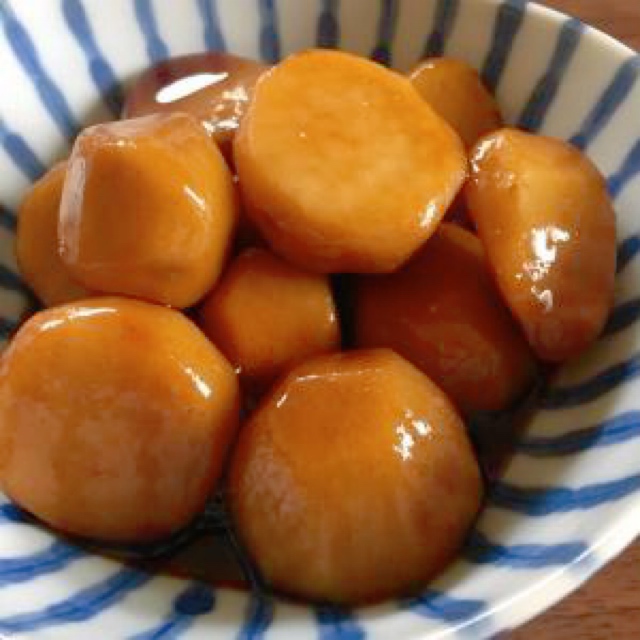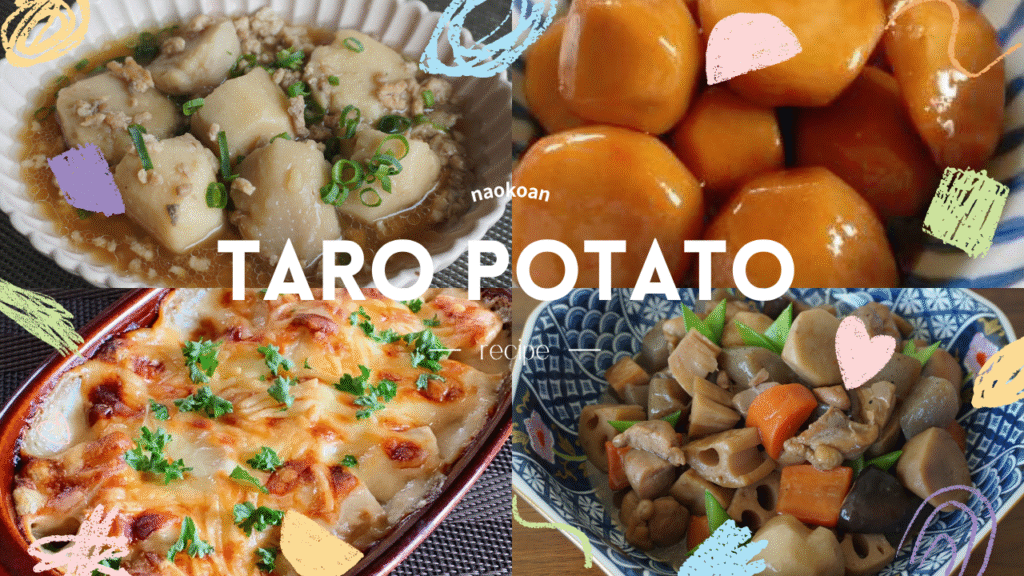
Satoimo Nikkorogashi (Simmered Taro)
What kind of dish is Satoimo Nikkorogashi (Simmered Taro)??
Satoimo Nikkorogashi is a Japanese side dish.
satoimo = taro
It’s made by simmering taro in a mixture of soy sauce, sugar, and mirin.
The name “nikkorogashi” refers to the process of rolling the ingredients while simmering.
The dish has a slightly sticky texture and a savory-sweet flavor.
The sticky component of taro is water-soluble dietary fiber such as galactan and glucomannan.
To prepare this dish, some people boil the taro to remove its stickiness and then simmer it with seasonings.
It is said to activate the stomach mucosa and intestines, and to suppress blood sugar levels and blood cholesterol.
To take advantage of this property, I use it without boiling it.
There are many types of taro, and each variety has different stickiness and texture. The most commonly sold variety is called “dodare.”

NUTRITON FACTS
INGREDIENTS : Satoimo Nikkorogashi (Simmered Taro)
- Taro (200g)
- Dark soy sauce (20g)
- Sugar (30g)
- Water (300g)
- Dashi stock (3g)
- Mirin (15g)
How to make Satoimo Nikkorogashi (Simmered Taro)
- Taro becomes sticky when it comes into contact with water, so peel it with a knife while it’s dry. Be careful not to slip or injure your hands due to the stickiness. It is safer to peel taro using a knife rather than a peeler.
- Wash the taro under running water and then cut it in half. (Some cooks wash it in salt water or boil it once to remove the stickiness.)
- If the taro is large, cut it in half or into quarters.
- Put soy sauce and sugar in a pot and simmer until amber. This step is very important; it will achieve the beautiful amber color.
- Put the taro, enough water to cover it, and dashi granules in a pot and simmer.
- Once the taro is soft and the broth has thickened, add mirin.
- When the taro is coated with the thick broth, it’s ready.


コメント